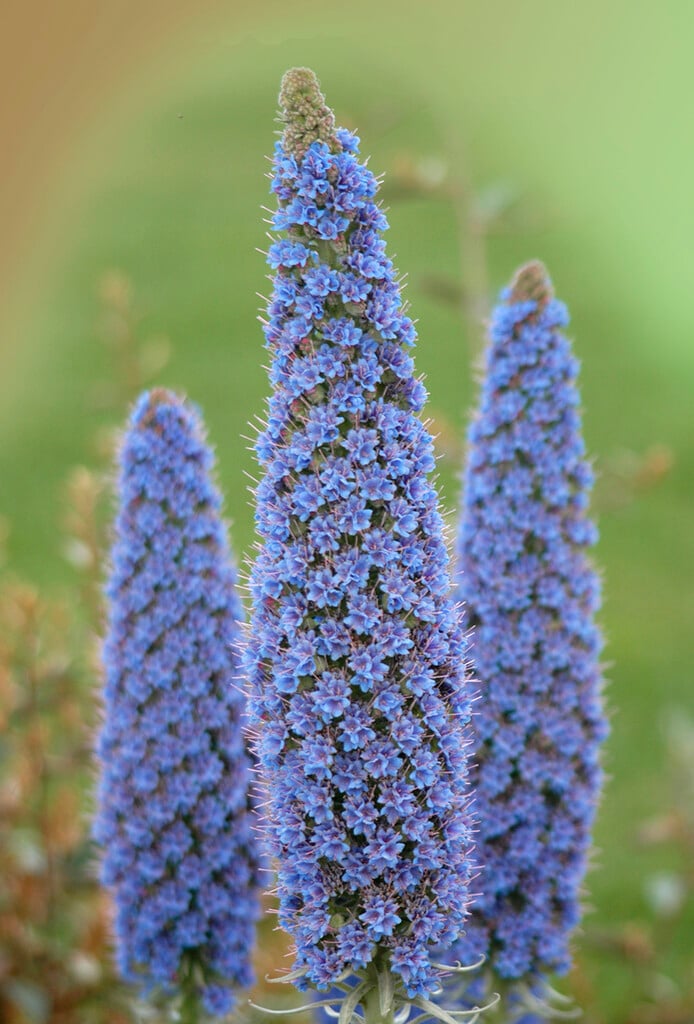Echium pininana
giant viper's bugloss
A rosette-forming biennial or short-lived perennial with lance-shaped, roughly silver-hairy leaves up to 1m in length. Each rosette produces a flower panicle up to 4m long of funnel-shaped blue flowers with large bracts in mid and late summer
Size
Ultimate height
2.5–4 metresTime to ultimate height
1–2 yearsUltimate spread
0.5–1 metresGrowing conditions
Moisture
Well–drainedpH
Acid, Alkaline, NeutralColour & scent
| Stem | Flower | Foliage | Fruit | |
| Spring | Blue | Grey Silver | ||
|---|---|---|---|---|
| Summer | Blue | Grey Silver | ||
| Autumn | Grey Silver | |||
| Winter | Grey Silver |
Position
- Full sun
Aspect
South–facing or West–facing
Exposure
Sheltered Hardiness
H3Botanical details
- Family
- Boraginaceae
- Native to GB / Ireland
- No
- Foliage
- Evergreen
- Habit
- Columnar upright
- Potentially harmful
- Skin irritant. Wear gloves and other protective equipment when handling
- Genus
Echium can be annuals, biennials, evergreen perennials or shrubs, with simple, coarsely hairy leaves and funnel-shaped flowers borne in panicles or dense spikes in summer
- Name status
Correct
- Plant range
- Canary Islands
How to grow
Cultivation
Under glass, grow in a peat-free, loam-based potting compost in full light. Water freely when in growth, sparingly in winter. Outdoors, grow in moderately fertile, well-drained soil in full sun. Protect from winter frost in situ with biodegradable horticultural fleece
Propagation
Propagate by seed sown at 13-16°C in summer, overwintering seedlings at 5-7°C
Suggested planting locations and garden types
- City and courtyard gardens
- Cottage and informal garden
- Coastal
- Flower borders and beds
- Wall side borders
Pruning
No pruning required
Pests
May be susceptible to slugs or glasshouse whitefly and glasshouse red spider mite under glass
Diseases
Generally disease-free
Get involved
The Royal Horticultural Society is the UK’s leading gardening charity. We aim to enrich everyone’s life through plants, and make the UK a greener and more beautiful place.
